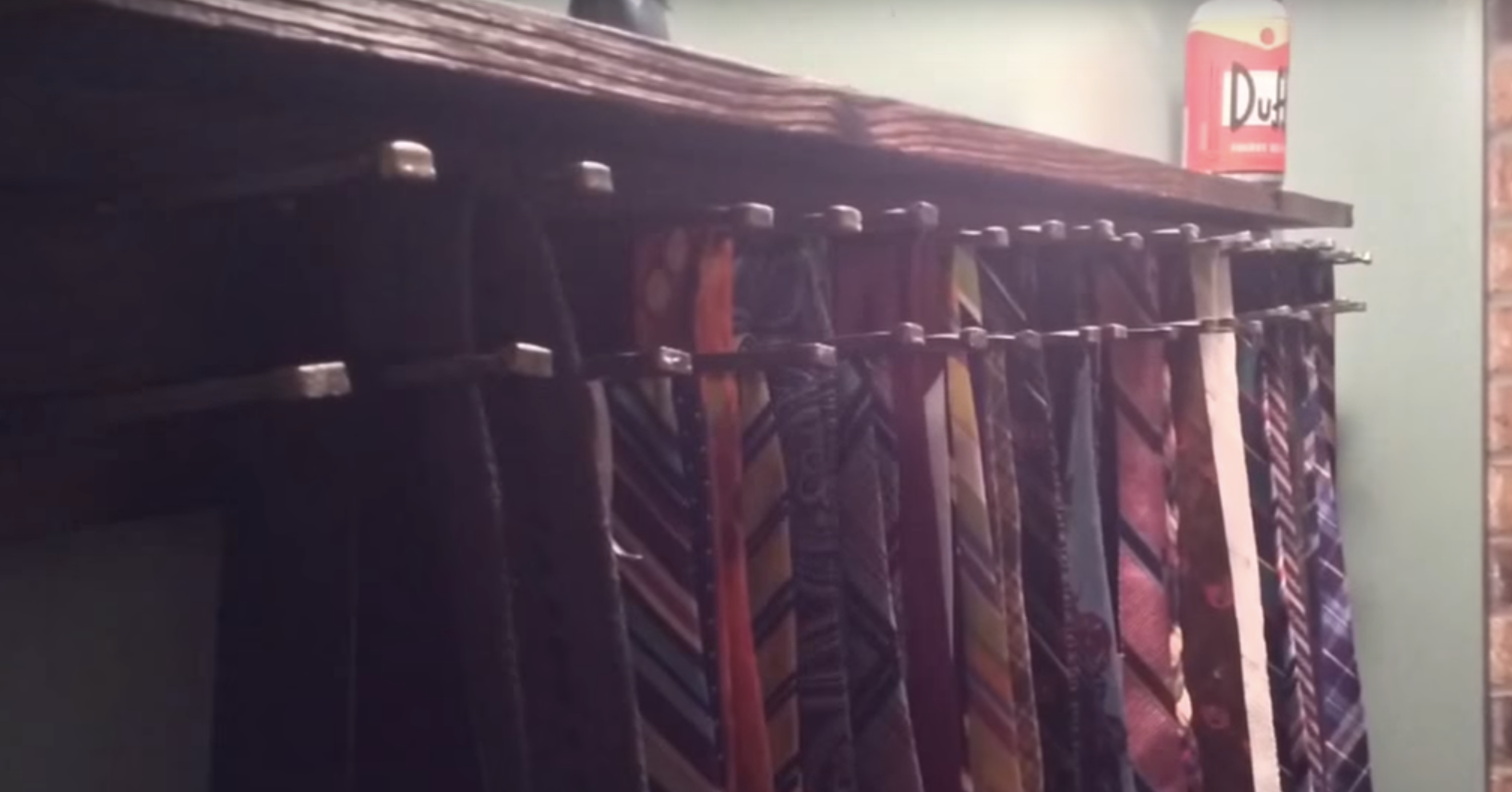If you are like me, you probably hate your standard tie hanger. Each tie overlaps the one under it, so the ties at the bottom are under a giant pile of other ties. On top of that the ones in the back are already nearly impossible to see! You thus find yourself every couple months finding a tie you never realized you had, and question why you hadn’t worn it before!
I officially had my fill of this and decided to take matters into my own hands and make a rack that would mount to the back wall of my closet, and allow me to easily see all of my ties at a glance, keep them from becoming cluttered, and hopefully, not take up a lot of space. I came up with this, a board with staggering pegs. This would allow me to have many ties in a small amount of space, thus making it efficient, keep them organized, and allow me to see them easily at a glance. I took the opportunity to make it interesting as well.
I used iron spikes as pegs and I put an awesome finish on the wood. I also added a shelf, partly for appearance, and also for use. All in all, I am extremely happy with how it came out. The whole project only took me a couple hours (plus time for polyurethane to dry).
(Thanks to Jimmy DiResta for this awesome style of finishing. It’s cheap, easy, and looks absolutely beautiful and unique.)




















